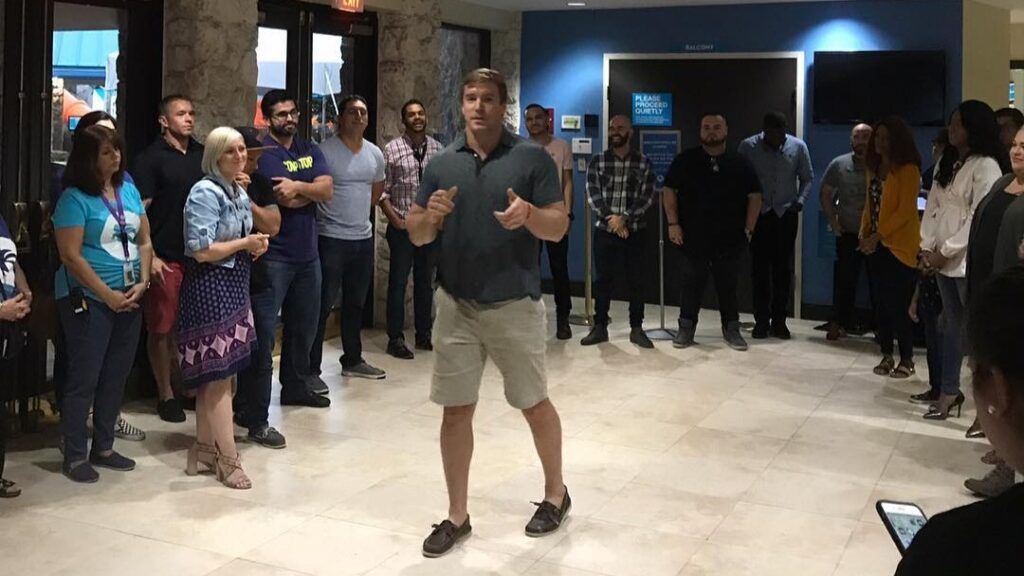Crafting Vision in Organizational Change for Operationally Inclined Leaders
Leadership demands a well-defined yet adaptable vision of the future, one that resonates emotionally and motivates action. This vision must inspire others and provide the foresight to transcend daily operations, aiming towards a broader, enriching goal. It doesn’t have to be set in stone, but it does need clarity and conviction so that others can grasp it and connect with it emotionally. The notion of a guiding vision is timeless, with roots that reach back to biblical wisdom.
A proverb reminds us, “Where there is no vision, the people perish” (Proverbs 29:18). This age-old insight resonates today, especially for leaders navigating organizational change. A vision represents more than a goal; it’s a way forward that imbues purpose and direction.
I know this firsthand, for I once grappled with the concept of vision myself. Focused on fixing problems and operational challenges, the idea of crafting a future seemed exciting but anxiety-inducing. But as I began to understand the power of vision, my perspective shifted. I realized that effectively communicating a vision wasn’t a burden; it was a powerful tool that shaped my organization towards development, change, and innovation. It became my compass, guiding us through times of crisis and transformation.
How does one transition from a manager consumed by day-to-day details to a leader with a clear and inspiring vision? How can leaders skilled in operations but stumbling at future planning find their way? This article will explore the importance of vision in organizational change, offering authentic, real, and personal guidance for fostering a visionary outlook.
Embracing vision doesn’t require you to be a natural visionary. It requires understanding, courage, and the willingness to grow. Here’s how we can all get better at this.
Core Ideology: Unearthing the Organization’s Heart and Soul
Discovering Core Values and Purpose

Uncovering an organization’s core values and purpose is essential in crafting a vision that resonates deeply. For example, Honda highlights innovation and respect for individuals, while Johnson & Johnson centers on caring for the world. These principles are not merely slogans but deeply embedded guides for organizational behavior.
This discovery process may call for creative reflection through workshops or dialogues. It’s about digging beneath surface-level operations to unearth the unique essence of the company. This exploration is especially critical in service-based businesses where employees are the face of the organization and roles are labor-intensive.
In the service industry, with significant customer interaction and routine tasks, mere hygiene factors like company policies, supervision, and salary may not suffice to keep employees motivated. These issues relate to the employee’s environment but do not inspire them to invest more of themselves in their work.
Motivators, on the other hand, fulfill individuals’ intrinsic needs for meaning and personal growth. They can transform mundane tasks into meaningful work by connecting them to the organization’s larger purpose. This alignment between daily tasks and the overarching vision can enhance productivity, improve service quality, and foster a culture of excellence in even the most labor-intensive roles.
Defining the Core Purpose
The organization’s reason for being or core purpose is distinct from its strategies. It’s what gives meaning to the work and attracts people to the mission. Examples include:
- Heroism: Unilever’s focus on making sustainable living commonplace.
- Discovery: Canon’s dedication to technological innovation.
- Altruism: Habitat for Humanity’s commitment to building homes and hope.
- Excellence: Siemens’ pursuit of engineering excellence.
Envisioned Future: Imagining a Bold and Vibrant Path Forward
Bold and Valued Outcomes

A compelling vision entails vivid and inspiring goals that motivate and guide change. These Bold and Valued Outcomes must align with the organization’s identity but also challenge it to grow. They become the milestones that stretch the organization’s capabilities and drive it to excel.
In the context of setting such goals, the concept of BHAGs (Big, Hairy, and Audacious Goals) is noteworthy. These are clear, tangible, and energizing targets that serve as rallying points for organizational action. IBM’s goal of “building a smarter planet” exemplifies a BHAG. Leaders must balance audacity with realism, setting targets that are aspirational yet grounded in the organization’s core values.
In the service industry, where employee engagement is crucial, goals like BHAGs can turn routine tasks into meaningful pursuits. Whether it’s exceeding customer expectations or innovating new service models, these goals unify and inspire the entire organization. They articulate where the organization is going, allowing everyone to see their part in achieving these audacious targets, driven by a clear vision and shared commitment.
Desired Future State
The desired future state of an organization is a vision that deeply resonated with me as I often operated out of an “ideology.” This ideology was not just a concept, but a living experience full of idealism, which I enjoyed articulating and living in. For those who resonate with idealism, as I do, crafting this vision can be an incredibly fulfilling process.
For example, Netflix’s mission of “entertaining the world” isn’t merely a business goal; it’s a shared passion, outlining a future full of creativity and global reach. It represents a living experience in a world where entertainment transcends boundaries and unites people.
This process of envisioning and articulating the future is both exciting and compelling. It’s about immersing oneself in the vision, living it, and experiencing it. Once you’ve done that, it becomes the basis to encourage others to join you in this destination. The vivid word picture it creates is emotionally powerful to members and motivates them to change. It’s more than a destination; it’s a shared journey that inspires everyone within the organization to strive for something greater.
By living in and experiencing this desired future state, leaders can unify their team, aligning efforts and nurturing a sense of purpose and belonging. But it starts with the leader going there first, and I found joy in being that visionary leader who could guide others toward a meaningful and prosperous future.
The Challenge for Operationally Inclined Leaders

Often, leaders skilled in day-to-day management find envisioning the future challenging, especially when it comes to prioritizing the visionary process over routine operational tasks. As someone who has walked this path, I encountered these challenges firsthand, grappling with questions that were both practical and philosophical. Could I spare the time to indulge in conceptual thinking when there were pressing daily matters at hand? How should I balance the immediate needs of customers, trade responsibilities, or supervisory roles with the creation of a big-picture future? Who should be involved in these visionary conversations, and was it even feasible for me to craft this vision alone? Moreover, how significant was this vision, and would it tangibly impact my bottom line?
These concerns were not trivial; they struck at the heart of what it means to lead, particularly for those of us in service-based businesses with labor-intensive roles. Here’s how I navigated these complex challenges:
- Empowerment Through Participation: I learned to involve team members in shaping the vision, gathering diverse perspectives and fostering collective ownership. By doing so, the visioning process became not a solitary endeavor but a shared mission.
- Utilize External Facilitators: At times, I engaged external experts to guide the process. This allowed me, as an operationally focused leader, to contribute without bearing the entire burden of vision creation. It was a liberating approach that made the journey more collaborative and less isolating.
- Balance Operational Strengths with Visionary Goals: I recognized that my operational skills, essential for my day-to-day responsibilities, were equally crucial in implementing the vision. By learning to blend these strengths with my broader visionary goals, I created a holistic approach that united the best of both worlds.
- Understanding the Impact on the Bottom Line: Initially, I questioned the importance of the visioning process. But as I immersed myself in it, I realized its profound influence on everything we did. It wasn’t just about setting targets; it was about defining our very purpose and aligning every action with it.
- Integrating Vision into Daily Routine: It wasn’t enough to have a separate time for “vision” and “operations.” I learned to integrate visionary thinking into my daily routine. By aligning my daily tasks with our long-term goals, the vision stopped being an abstract concept and became a living guide, transforming how we operated, innovated, and grew.
These insights weren’t acquired overnight but evolved through continuous reflection, trial, and adaptation. The journey taught me that visioning isn’t a distraction from our core responsibilities but an essential complement to them. By embracing the challenges and working through them, I found a new way to lead – a way that united my operational strengths with my visionary aspirations, allowing me to create a richer, more resonant future for my organization and all who were part of it.
Embracing Vision as a Collaborative and Creative Endeavor
In conclusion, creating a vision is not just a task for managers; it’s about aligning the heart of a business with its future. This can be hard, especially for leaders like me, who are focused on the day-to-day details of their work. I’ve faced challenges, like how to balance immediate needs with big-picture thinking, who to involve in the process, and whether I could do it alone.
But through teamwork, creative thinking, and determination, I learned how to craft a compelling vision. I found ways to blend my strengths in operations with bold and inspiring goals. I learned to prioritize and balance my time, choosing the right moments to focus on vision and the right moments to focus on daily tasks.
A friend who runs an educational startup shared a similar struggle. By working with his team, they created a vision that transformed their small company into a nationwide platform. Creating a vision is about imagining a future filled with purpose, not just managing daily tasks. It’s a growth opportunity that changes us as leaders, helping build a better future for our organizations.
I’m eager to delve deeper into this subject on the Dr. Claude Kershner show, in an episode called “Lasting Leadership.” We’ll explore how leadership goes beyond titles and resources; it’s about influence and strategy. I’ll share my key beliefs on leadership, learning, and creating value, aiming to inspire and guide those keen to lead. Join us to discover how vision, determination, and leadership can make a lasting impact on both your organization and your life. Whether you’re new to leadership or an experienced hand, this episode offers insights to help you grow and succeed.
